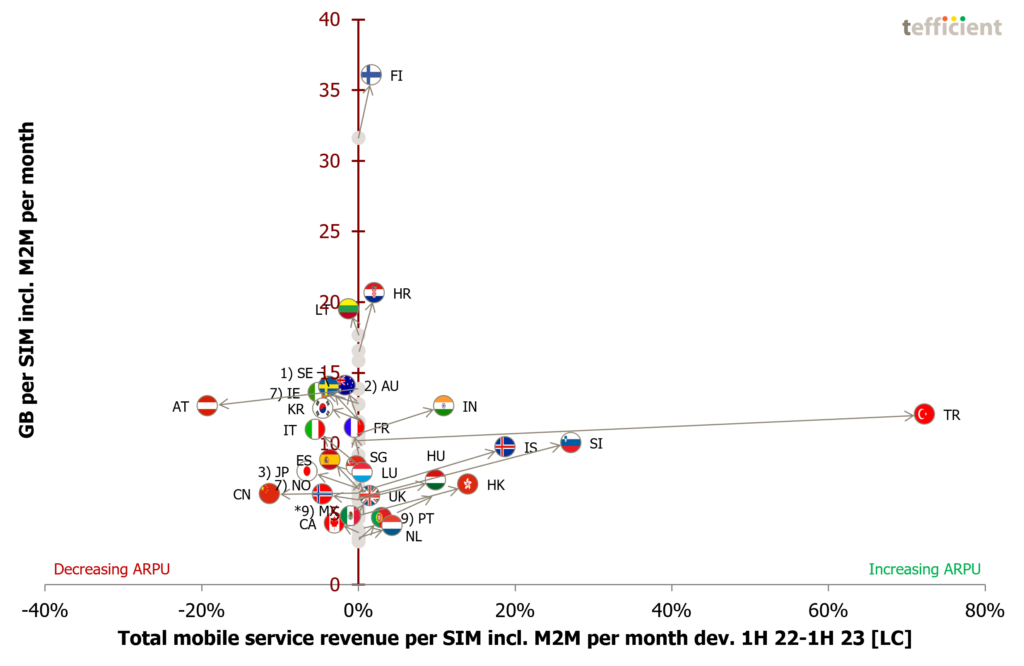
Tefficient’s 40th public analysis of mobile data development and drivers compares 47 countries worldwide, including M2M/IoT in the total bases. Mobile data usage grew in 44 of them, with Austria, Bahrain and China being exceptions.
If you’d rather see the analysis excluding M2M, go here.
When usage grows, the growth rates are slowing. Cyprus, however, had an astonishing growth rate of 123%, in stark contrast to much slower growth rates, or even declines, elsewhere.
Data-only subscriptions dominate average mobile data usage, although their market share is limited. In 2022, Latvia‘s average data-only subscription consumed 138 GB per month. In the FWA-only category, Australia stood out with 334 GB per month in 1H 2023.
While data-only drives traffic, the same cannot be said for 5G in general. Reporting is imperfect, but only three countries – South Korea, Austria and Saudi Arabia – demonstrate disproportionately high 5G traffic in relation to their 5G bases. We elaborate on the strategies adopted by these countries and highlight aspects other nations might be missing.
Overall, mobile data revenue reached its lowest level once again, although the erosion in revenue per gigabyte slowed compared to our previous analyses. Portugal experienced the fastest erosion rate at 30%, while Turkey witnessed a much-needed increase.
Human customers currently subsidise M2M/IoT customers
In 44% of the markets, an increase in ARPU followed data usage growth. This outcome is disappointing, especially given the inflationary backdrop. The result is worse than in our exclusive-M2M analysis. M2M/IoT customers do not contribute to the ARPU growth of operators in a similar way as human customers do. We conclude that human customers currently subsidise M2M/IoT customers, prompting us to wonder why.
Download the analysis: Human customers subsidise M2M/IoT customers
Updated 20 December 2023 with 1H 2023 data for Romania, Q2 2023 data for Croatia and May 2023 5G data for the UK
Updated 22 December 2023 with a correction of the historical full year data for Australia
